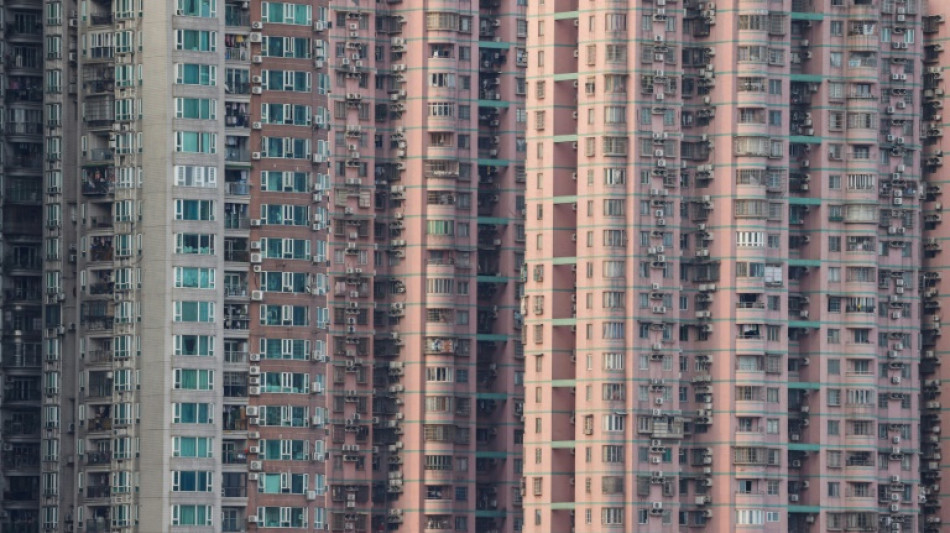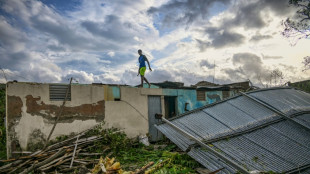
-
 Wolves sack Pereira after winless Premier League start
Wolves sack Pereira after winless Premier League start
-
Debutants Berkane among CAF Champions League top seeds

-
 Sundar steers India to five-wicket win over Australia in 3rd T20
Sundar steers India to five-wicket win over Australia in 3rd T20
-
What we know about the UK train stabbings

-
 Jonathan Milan wins wet Tour de France Singapore Criterium
Jonathan Milan wins wet Tour de France Singapore Criterium
-
Canadian teen Mboko wins Hong Kong Open for second WTA title

-
 Two children among dead in Russian blitz on Ukraine
Two children among dead in Russian blitz on Ukraine
-
South Africa opt to bowl against India in Women's World Cup final

-
 Dominant McKibbin wins Hong Kong Open to seal Masters spot
Dominant McKibbin wins Hong Kong Open to seal Masters spot
-
US Navy veterans battle PTSD with psychedelics

-
 'Unheard of': Dodgers in awe of iron man Yamamoto
'Unheard of': Dodgers in awe of iron man Yamamoto
-
UK police probe mass train stabbing that wounded 10

-
 'It's hard' - Jays manager Schneider rues missed chances in World Series defeat
'It's hard' - Jays manager Schneider rues missed chances in World Series defeat
-
Women's cricket set for new champion as India, South Africa clash

-
 Messi scores but Miami lose as Nashville level MLS Cup playoff series
Messi scores but Miami lose as Nashville level MLS Cup playoff series
-
Dodgers clinch back-to-back World Series as Blue Jays downed in thriller

-
 Vietnam flood death toll rises to 35: disaster agency
Vietnam flood death toll rises to 35: disaster agency
-
History-making Japan golf twins push each other to greater heights

-
 Death becomes a growing business in ageing, lonely South Korea
Death becomes a growing business in ageing, lonely South Korea
-
India's cloud seeding trials 'costly spectacle'

-
 Chiba wins women's title, Malinin leads at Skate Canada
Chiba wins women's title, Malinin leads at Skate Canada
-
Siakam sparks injury-hit Pacers to season's first NBA win

-
 Denmark's fabled restaurant noma sells products to amateur cooks
Denmark's fabled restaurant noma sells products to amateur cooks
-
UK train stabbing wounds 10, two suspects arrested

-
 Nashville top Messi's Miami 2-1 to level MLS Cup playoff series
Nashville top Messi's Miami 2-1 to level MLS Cup playoff series
-
Fergie, her daughters and the corgis hit by Andrew crisis

-
 'I can't eat': Millions risk losing food aid during US shutdown
'I can't eat': Millions risk losing food aid during US shutdown
-
High price of gold inspires new rush in California

-
 'Swing for the fences': Carney promises bold budget as US threat grows
'Swing for the fences': Carney promises bold budget as US threat grows
-
UK police arrest two after 'multiple people' stabbed on train

-
 NBA Hawks lose guard Young for four weeks with knee sprain
NBA Hawks lose guard Young for four weeks with knee sprain
-
50 dead as Caribbean digs out from Hurricane Melissa

-
 Forever Young gives Japan first Breeders' Cup Classic triumph
Forever Young gives Japan first Breeders' Cup Classic triumph
-
Mbappe's Real Madrid extend Liga lead, Villarreal move second

-
 Salah savours 'great feeling' after 250th Liverpool goal
Salah savours 'great feeling' after 250th Liverpool goal
-
Ethical Diamond surges to upset win in $5 million Breeders' Cup Turf

-
 Kinghorn kicks Toulouse to Top 14 summit
Kinghorn kicks Toulouse to Top 14 summit
-
Mbappe extends Real Madrid's Liga lead in Valencia rout

-
 All Blacks sink 14-man Ireland 26-13 in Chicago Test
All Blacks sink 14-man Ireland 26-13 in Chicago Test
-
World champ Malinin takes lead at Skate Canada

-
 Liverpool snap losing streak as Salah hits 250 goals in Villa win
Liverpool snap losing streak as Salah hits 250 goals in Villa win
-
Salah's 250th Liverpool goal sinks Villa as Arsenal cruise at Burnley

-
 Morant suspended by Grizzlies after rebuking coaching staff
Morant suspended by Grizzlies after rebuking coaching staff
-
Spalletti begins Juve tenure with win at Cremonese but Napoli held

-
 Frank refuses to condemn Van de Ven, Spence for snub in Spurs defeat
Frank refuses to condemn Van de Ven, Spence for snub in Spurs defeat
-
France superstar Dupont extends Toulouse deal

-
 Egypt officially opens grand museum near pyramids
Egypt officially opens grand museum near pyramids
-
French fraud watchdog reports Shein for 'childlike' sex dolls

-
 Scotland thrash USA before All Blacks' clash
Scotland thrash USA before All Blacks' clash
-
Five things to know about the Grand Egyptian Museum


Building blocks? Cutting pollution from steel, concrete and aluminium
They hold modern life together in everything from airplane parts to apartment blocks, but steel, concrete and aluminium come with a hefty climate cost that the world could be paying for decades.
Heavily reliant on fossil fuels, they account for a significant chunk of greenhouse gas emissions -- pollution that is particularly hard to cut fast enough to meet global warming goals.
The three sectors say they aim to slash -- or even eliminate -- their CO2 emissions by 2050, despite growing demand in a rapidly urbanising world.
To do that will require a buildings "revolution", according to the United Nations, while the International Energy Agency wants greater recycling, cleaner energy and technological innovation.
- Cement and concrete -
"Concrete is the second most used substance on Earth after water, and vital for much of our modern infrastructure," said some of the industry’s biggest players including Cemex, Heidelberg and Holcim, Tuesday.
With demand expected to rise 50 percent by 2050, tackling the industry's emissions is becoming increasingly "urgent", they said.
Limestone and clay must be heated to 1,450 degrees Celsius to produce the rock-like residue known as "clinker" in cement. The fuel necessary to create such heat and the ensuing chemical reaction both produce CO2.
Switching to clinker substitutes, energy efficiency improvements, changing building design to cut down on the need for concrete, and using clean energy sources could substantially reduce emissions from the industry.
Carbon capture and storage (CCS) technology is also predicted to have a key role.
But observers fear that a planned reliance on solutions that are unproven at the scales required could distract from rapidly moving away from fossil fuels.
The Global Cement and Concrete Association said it expects the technology to account for 36 percent of the industry's global CO2 reductions by 2050.
- Steel -
Highly polluting coal makes up some 75 percent of the raw material and energy used by the steel and iron industry, according to the IEA.
The industry says it plans to replace coal-dependent blast furnaces with natural gas -- until that energy source can be swapped for "green hydrogen", produced by splitting water molecules using renewable electricity.
Green hydrogen paves the way for a gradual shutdown of polluting blast furnaces that could be replaced by the "direct reduction" of iron ore.
Steel firms are also betting on recycling scrap metals.
Europe is at the forefront of the green advances. The German industrial giant Thyssenkrupp -- singlehandedly responsible for 2.5 percent of the country's CO2 emissions -- plans to transform its historic plant in Duisburg to green steel.
But the scale of investment and rising energy prices have hampered the project.
The world's second-largest steelmaker, ArcelorMittal, acquired 80 percent of a Texas factory capable of producing steel without coal in 2022, and it is currently testing a pilot CCS system in Dunkirk, France.
Because of these difficulties, the IEA recognises that iron and steel manufacturing will remain "one of the last sectors in the Net Zero pathway that will still be using coal in 2050".
But it calls for carbon capture and hydrogen production to be "perfected and developed at scale" in the meantime.
- Aluminium -
Aluminium is a key for allowing for lighter cars and planes and in energy transition due to its ability to conduct electricity.
But it is also responsible for some of the highest emissions. One tonne of aluminium generates between five and 25 tonnes of CO2, depending on its source of electricity, according to Mineralinfo, a resource portal run by the French government.
Emissions depend above all on the type of fuel used -- often coal or heavy fuel oil -- to produce the vast quantities of energy necessary to make the metal.
The industry is hoping that recycling, CO2 capture, and emerging technology will bring down its emissions.
D.Kaufman--AMWN


